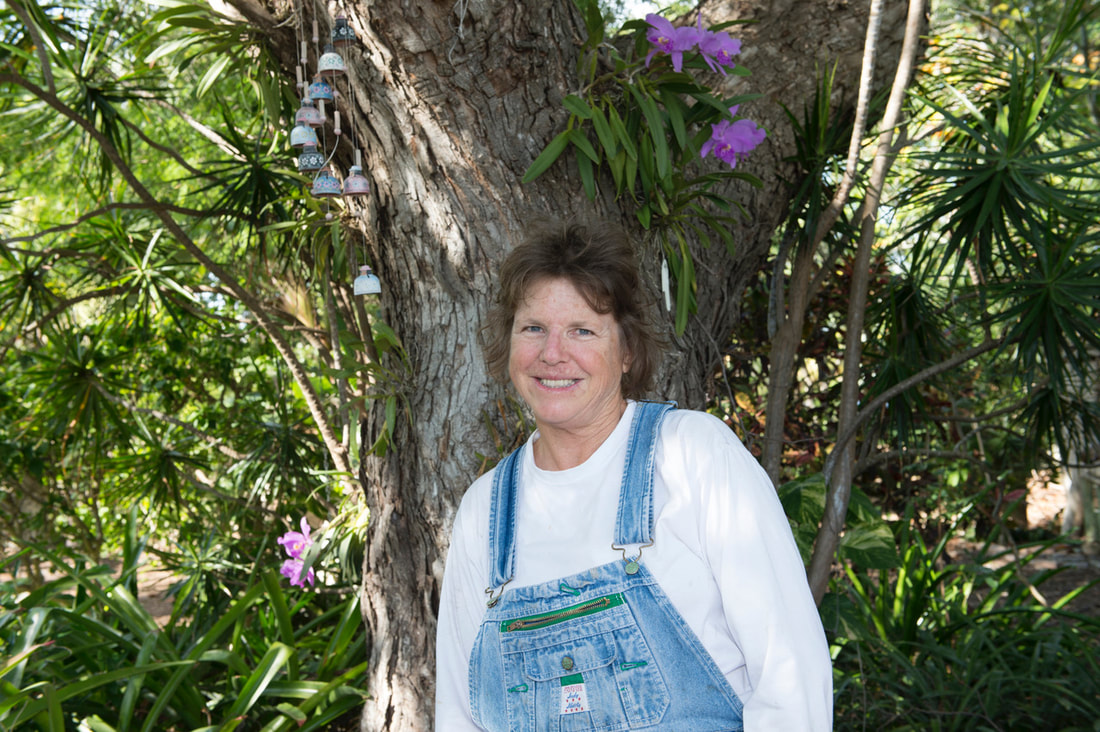|
“Plant materials should thrive, be non invasive, and require little maintenance. The design should conserve the natural features of the site to the greatest extent possible and provide for the continued ecological health of the area.” landscape architect Frederick Law Olmsted, (1822-1903) who was into sustainable design and environmental conservation long before it was in vogue.
Once upon a time there was a little girl walking down Country Club Road when she saw a man with a paint sprayer applying green paint to a drought stricken lawn in an attempt to comply with ORCA regulations specifying that grass must remain green at all times. That little girl, now twenty something came up to me at a New Year’s Eve on the beach party some years back, and said that was a very memorable part of her early development. My mother-in-law Helen, an early conservationist, did not really wanted to expend precious natural resources for that use. In the 1960’s when Helen and Ed Ellis arrived, from Country Club Road you could actually see the ocean, and there was not much life living other than what nature provided. She planted tropical trees in her yard and allowed the native vegetation to flourish. As a result of that edict, in the late 1990’s I began planting native plants on the perimeter, adding mulch where there had been grass, and in general, provided a beautiful buffer to the outside world. Fast forward another couple decades, my Florida garden, Helen’s yard, is my retreat, my refuge away from work and the computer; the place I go to make sense of it all. Olmsted believed and promoted the idea that environment would promote a sense of tranquility. And after IRMA, it is all still there, though a bit bruised and battered. I did not lose a tree; lots of limbs went down and I had to straighten a few trees that needed help, but all since have sprouted new bright green leaves. My garden utilizes the basic principle of right plant right place, something to keep in mind when you're planning a garden. Native plants comprise most of my plantings, but also present are non-native plant species, which are historically adapted and suited to our climate, soil and wildlife. I plant small knowing that in time they will grow quickly and will be well anchored in our Keys rock and no soil “soil”. These native trees and shrubs are planted in clusters, which serves as a wind buffer. My more vulnerable tropical fruit trees, located interior on the nearly one-acre property, all withstood the two days of battering salt wind and rain, and hardly lost a leaf. After the storm, it seemed like everywhere you looked around the Reef, there were lone Bismarckia fan palms toppled onto roofs and blocking roadways; I even have a Bismarckia and it is still standing clustered between my native Lignumvitae hedge. Jeremy Dixon, Crocodile Lake National Wildlife Refuge Manager wrote after the storm, “The forest itself looks bruised and battered, but please realize hurricanes are a natural part of the ecology of the Florida Keys. The trees will regrow and the wildlife that depends on these unique habitats can adapt to these changes. A forest of trees has a way of supporting each other and is more resilient. There is a message here for humanity, and during this time of need we should support each other.” Another thing I noticed after IRMA was homes built in former hardwood forests, ended up with trees toppled onto the house. The equipment used to build the house ends up compromising the root system, by compacting the soil. Also removing trees to make way for the structure’s foot print makes a corridor where there was not one prior to. Native plants have unique and distinct purposes. They provide food, water and cover to attract wildlife, and keep in place our shoreline, while at the same time provide protection for our homes. I cannot even begin to describe my feelings when I discovered in Key Largo, during the chaos after the storm, someone had cut down a forest of beautiful red mangrove trees, I guess with the intent of improving an ocean view. And I thought that all of the unemployed surfers with chainsaws had left Key Largo almost two decades ago! And speaking of shoreline, we must keep intensive maintenance plants, which require lots of pesticides and fertilizers, away from shoreline. Come to think of it... the Key’s environment is rarely more than a mile away from the shoreline. Not to mention our porous coral rock substrate which lies a few inches below our soil, which leaches everything back into our ground water... our precious Reef. Most native plants are healthy without direct or indirect human actions. And speaking of health, by growing these plants, I benefit from seeing the birds, listening to the songs of the wildlife that is attracted along their migrations. So too I have also gained a knowledge of plants health giving benefit for humanity. My soursop trees, I planted two because my photo assistant Ronnie told me he would be cured of cancer if he had the chance to partake in the fruit and the tea from the Soursop, except he didn’t survive the chemo; or the healing properties of lemongrass, an ornamental resembling the low grasses you see planted beneath the taller shrubs and trees that line the golf course, except this one deters pests and you can make a healthy tea, or wonderful vitamin-rich, lemon-y lemonade. Butterflies and other pollinators are attracted to the milkweed, thistles, garlics, passion vine, pentas, sennas, spanish needle, grasses, vines, wild lime, and wild tamarind to name a few. The birds seek out insects in the shrubs, eat the fruit of the wild coffee, peppers, stoppers, rough strong bark, papaya and poisonwood trees. The papaya I planted to reduce white fly on my tomato plants, and it worked, plus it has amazing health benefits and it delicious too! The Keys are unique in that many of the plants grown here do not grow any anywhere else in North America. Typically Caribbean or tropical in their origin, we all stand to benefit from learning about their usage. Much of my knowledge has come via my certification as Master Gardener, University of Florida IFAS program, but also from working with transplanted Cubans, Hondurans, Haitians and Conchs I have met in everyday life. So think about it. Learn about here. Be here, now. Carol Ellis
3 Comments
Carol Ellis
10/17/2017 01:00:23 pm
I am grateful for the garden, the peace it brings and the life it gives.
Reply
Sandy
10/20/2017 06:06:46 am
Your treatise is inspiring, informative, important and beautiful. Just like you, dear one. My peace comes from the wonders of nature’s magnificent waters and the life and joy it brings. Thank you for capturing that for me in your majestic work. I am blessed to know you. Leave a Reply. |
CAROL ELLIS
This photographic website provides me the opportunity for self-expression, for sharing Archives
May 2024
TAGS
All
|
© Copyright 2022. Carol Ellis Photography.
All Rights Reserved.



 RSS Feed
RSS Feed
